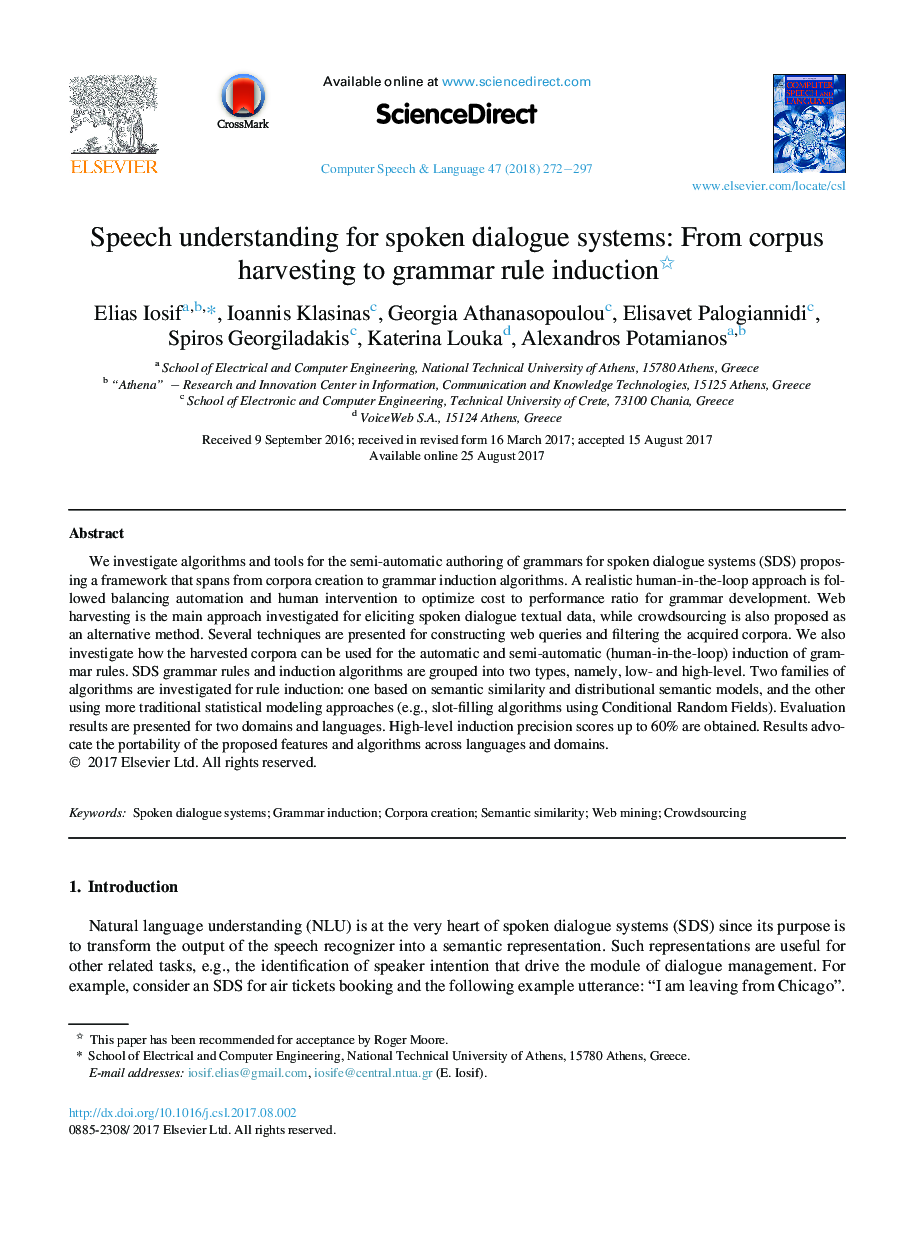| Article ID | Journal | Published Year | Pages | File Type |
|---|---|---|---|---|
| 4973650 | Computer Speech & Language | 2018 | 26 Pages |
â¢We investigate algorithms for inducing grammars for spoken dialogue systems.â¢Main tasks: creation of text corpora; induction of low- and high-level grammars.â¢The proposed algorithms and features are portable across languages and domains.â¢Different features should be applied for low- and high-level grammar rules.â¢Web data harvesting is a plausible approach for corpora creation.
We investigate algorithms and tools for the semi-automatic authoring of grammars for spoken dialogue systems (SDS) proposing a framework that spans from corpora creation to grammar induction algorithms. A realistic human-in-the-loop approach is followed balancing automation and human intervention to optimize cost to performance ratio for grammar development. Web harvesting is the main approach investigated for eliciting spoken dialogue textual data, while crowdsourcing is also proposed as an alternative method. Several techniques are presented for constructing web queries and filtering the acquired corpora. We also investigate how the harvested corpora can be used for the automatic and semi-automatic (human-in-the-loop) induction of grammar rules. SDS grammar rules and induction algorithms are grouped into two types, namely, low- and high-level. Two families of algorithms are investigated for rule induction: one based on semantic similarity and distributional semantic models, and the other using more traditional statistical modeling approaches (e.g., slot-filling algorithms using Conditional Random Fields). Evaluation results are presented for two domains and languages. High-level induction precision scores up to 60% are obtained. Results advocate the portability of the proposed features and algorithms across languages and domains.
